Demand for Wheeled Loaders is Expected to Grow at a CAGR of Around 9 % Until 2020
Loader benefits
Ever since the Union Budget, most players in the Construction Equip. (CE) industry are perceptibly relieved. Slew of construction & infra. projects announced, not to forget their size, is definitely going to see some action among manufacturers of CE. When a country’s infra. woes are as acute as India’s, it is generally accepted that it’s only a matter of time before the govt wakes up to announce a slew of mammoth projects. For some time, the CE industry has been lagging due to the lack of infra. projects. Most manufacturers are closely exploring the possibilities of how the product integrates with the new demand transition which is also an equally challenging proposition. What the industry finds vexing is the shift in the customer profile. Many large corporate who were active in road & infra. segment purchased their own equip.. Over the last few years, most of these companies have shifted to contracts & now prefer to have the contractors purchase the equip. on their behalf. This has given rise to a retail market, which in turn has led to the entry of new players. When the market bounces back, a large of it is expected to be in the used equip. market. This is because the dull market last couple of years have seen too many idle machines lying around. Simultaneously, more companies have had the luxury of time to look into their products keenly & come up with innovations. Most manufacturers now have developed machines that reduce power while increasing its lifespan.
Industry is optimistic about growth. India has a huge potential. A part of it is waiting to be tapped through innovation & indigenization of tech’s while some part is stuck up in latent demand, which can be unleashed by effective governance & project execution by the govt. The truth is that there is a massive amount of work to be done in every sector, & this will call for large volumes of equip. How large those volumes will be dependent on key stake holders working in sync with each other. Govt, pvt. players, financial institutions, environmental & social specialists need to work towards effectiveness in facilitating project execution & addressing the key impediments. Given the complex nature of projects & tight timelines, demand for technologically advanced & versatile CE is on the rise. Companies are now looking for fuel efficient & innovative products which will help in speedy completion of tasks. Increasingly factors such as productivity, fuel efficiency, reliability, innovative safety features etc. are taking a lot of importance. Hope to see movement by the second half of this fiscal. However, a lot depends upon the implementation & monitoring of new initiatives/reforms. Expect a turnaround in equip. demand only if project execution picks up. Moreover, to ensure long term growth the govt should focus on increasing investments & building up investors’ confidence.
Govt investments in infra. are sure to pick up to meet the ambitious growth target that the nation has set for itself. With infra. investment set to go up, demand for the CE, especially the versatile backhoe loaders will surely rise further. The market for the loader backhoe has registered a decline since 2010, but now the market is expected to hold steady from 2014 onwards & notch up double digit growth numbers. There’s a general consensus that the market is well poised to grow by around 8% in 2014, & witness a higher 10-14% expansion during 2015-2016. The market structure has remained more or less unchanged for the past five years, but vast differences are noticeable while evaluating the performance of individual products. The share of the most popular product, backhoe loaders, grew from 38% in 2009 to 50% in 2013, while crawler excavators, considered to be the most important machine for infra. building, declined from 20% to 18% during the same period. The equip. uptime & fuel consumption are the major factors that customers consider while deciding on the machine. Time-bound projects need reliable machines & manufacturers are trying to innovate & adapt latest tech’s.
Govt investments in infra. are sure to pick up to meet the ambitious growth target that the nation has set for itself. With infra. investment set to go up, demand for the CE, especially the versatile backhoe loaders will surely rise further. The market for the loader backhoe has registered a decline since 2010, but now the market is expected to hold steady from 2014 onwards & notch up double digit growth numbers. There’s a general consensus that the market is well poised to grow by around 8% in 2014, & witness a higher 10-14% expansion during 2015-2016. The market structure has remained more or less unchanged for the past five years, but vast differences are noticeable while evaluating the performance of individual products. The share of the most popular product, backhoe loaders, grew from 38% in 2009 to 50% in 2013, while crawler excavators, considered to be the most important machine for infra. building, declined from 20% to 18% during the same period. The equip. uptime & fuel consumption are the major factors that customers consider while deciding on the machine. Time-bound projects need reliable machines & manufacturers are trying to innovate & adapt latest tech’s.
The range of full-size backhoe loaders, with digging depths of 14 feet or more (as compared with compact models with lesser digging depths), provides buyers with a spread of machine capabilities & purchase prices that allow tailoring these machines to the user’s budget & typical job-site tasks. Models in the 15-foot class are grabbing market share globally where the added size, performance, & hydraulic capabilities of these models provide a suitable argument for replacing mid-sized excavators. The backhoe does less damage to the ground, is more maneuverable, easier to transport, & provides the lifting capacity of about a 7-ton excavator. Srivastava of Terex says that their backhoes perform faster while digging & loading at lower operating costs, with durability through quality & technology innovation. The powerful TLB 844S is designed for fastest digging & loading in the toughest strata. Reliable & efficient TLB 844S will confidently beat any competitor in a match of digging, loading or dozing while SmartUC hydraulics on this machine helps save diesel even while maximizing work output. In general, larger backhoe loaders, those with digging depths of 15 ft or more, provide expanded capabilities that appeal to a certain segment of the market. Larger backhoes are purchased by heavy construction & highway contractors who might choose them for greater dig depths, heavier lifting capability, or the ability to handle larger tools- such as hydraulic hammers. Users who need the versatility that the backhoe loader provides, but who also require front-bucket lifting power equivalent to that of a comparably sized wheel loader, might opt for larger backhoe loaders. These machines typically differ from their smaller counterparts by incorporating heavier structures & heavier axles, as well as more capable hydraulic systems. Generally, but not universally, larger backhoe loaders are equipped with variable-displacement, load-sensing, piston-type pumps in their implement hydraulic systems, providing a higher level of hydraulic efficiency & fuel efficiency than gear-pump systems that might be used on smaller models. Some manufacturers, however, opt to use variable-displacement hydraulic systems on their complete range of models.
For buyers investigating available backhoe loaders with an eye toward increased attachment use, features that should be considered include the availability of couplers (both front & rear), the availability of auxiliary hydraulics (both front & rear), & the availability of parallel lift for the front linkage to simplify fork operations. Some manufacturers offer tool-carrier versions that typically have a hydraulically activated coupler at the front & parallel lift linkage. The key to productivity when using powered attachments is to make sure the machine’s auxiliary hydraulic flow is matched to the attachment & is capable of handling both single- & double-acting hydraulic cylinders. Muralidharan of Volvo CE says that in terms of overall CE, we are at the end of the lower most end of the cycle. In terms of quantity it is 20-30% lower than other equip. Expectations are that investments will happen & some projects will get started & the industry could see a growth of around 10-12%. & further growth will happen only after 2017-18. “CE business is cyclical. Business takes four to five years to pick up but this time it has been shorter. India has lots of supply but less demand. Backhoes are standing & there’s little for them to do. We do see a boom in the real estate sector happening soon. We do see an increase in demand for wheel loaders mainly coming from ports. The ports import coal & iron ore. Many companies import coal & iron ore for use in steel plants. So demand for wheel loaders has gone up by about 5%. For manufacturers like Volvo whose core value is safety, the Co. constantly works at various levels of safety measures. In fact, the seat belts used today was created by Volvo several decades ago. In terms of wheel loaders, the Co. has 3 levels of safety measures. Operator safety is when it works on the cabin structure, seat belts, filter changes, hydraulic pressure checks, among other things where the operator need not jeopardize his life but conduct all service checks standing on the ground. Then there is the training provided for the operators on maintaining safety. The third part is the equip. safety wherein Volvo ensures in case of a part coming loose, it does not harm anyone. Indian wheel loader makers are also looking at fuel consumption. Volvo considers total cost of ownership & that is how we sell our machines. It ensures their machines have low maintenance cost & fuel cost. Though the initial cost of is high, the cost of running the machine per hour per tonne is the lowest. The Co. also offers features like broom suspension on wheel loaders. Broom suspension helps in softening the jumping effect faced by operators carrying load. When one moves the vehicle having a broom suspension, it will reverberate only on the buckets & doesn’t pass it on to the operator. Concern for operators is exhibited by manufacturers when they installed air-conditioning in most of the vehicles. However, viewed from the long-term prospective, existing brands with wide market base will continue to connect their names with product support, an initiative which they will now be making stronger than before for higher brand recall.
The market for wheeled loaders is directly linked to the levels of activity in the construction & mining sectors, which account for over 80% of the demand. After peaking at 2,660 units, the wheeled loader sales declined to 1,685 units in 2013 before recovering to 2,097 units in 2015 in line with the changes in activity levels in road construction, quarry & mining segments, according to Samir Bansal, Man-ager-India, Off-Highway Research. Off- Highway Research is quite optimistic about the growth in demand for wheeled loaders & expects the market to grow to 3,200 units by 2020. Samir adds, “The size of the wheeled loader in an application would depend on the quantum & rate of material to be handled. Generally, wheeled loaders of over 200 hp (over 5 MT payload) are more in demand from the mining & port sec-tors. However, a large number of 100-150 horsepower (3 MT payload) machines are also used in the above applications.” According to him wheeled loaders account for around 4% of the sales of CE that we cover in our research. The 100-150 horsepower (3 MT payload) category of wheeled loaders still accounts for over 75% of the total demand, while larger machines account for18-20percent.
Demand Supply
Wheel loader being a versatile piece of equip. finds application in many sectors such as material handling in ports, mines, quarries, crushing, & roads & highways. The industry has been going through a downturn for over four years; however, we are now seeing some signs of recovery. Leading this recovery is roads & highways sector. Demand for wheeled loading shovel is dependent on the resurgence of the mining sector, & with the decent thrust on ports, we feel that the demand for the product will go up. Demand for SDLG wheel loaders is gradually growing in the mining industries. Much of this demand is being generated in the wake of the govt’s plan to boost coal production in India for domestic consumption. The applications for SDLG wheel loaders in coal mining include wagon loading duties & truck loading of coal. Demand in the general construction market at present is flat or down com- pared with last year. However within the road building sector there is strong demand as that business is booming. In general construction the industry expects some pick up in the last quarter of this year or early next year. For roads & ports, predominantly, demand is for the 3 - 5 T size class (100 - 200 hp) wheel loaders. As you would expect, mining involves a lot more machine utilization & material handling; 5 - 10T size class (200 - 600 hp) machines are required. Caterpillar offers the complete range of wheel loaders in India; right from 3T all the way up to 38T. However, for ports, with the parameters of utilization, amount of material handled, fuel efficiency & space constraints, 950GC & 966H would be ideal. In terms of material re-handling in quarries, demand here is largely aligned with the market conditions affecting infra. industries -roads, railways & general construction. Those quarries supplying materials to the road building sector are currently active; while those quarries serving the general construction sector remain flat. SDLG is planning to roll out new products in the near future which expect will help strengthen our position in these sectors, says George. Historically ports have been a very strong sector for SDLG wheel loaders. The robust & reliable design of the machines in a cost-effective package makes them an attractive option for port operators. However in recent months activity levels have been quite low & in particular coal re-handling operations in this sector have been limited, which has a direct effect on demand.
Shift towards Higher Capacity
Wheel loader is a versatile product which can be used in multiple ways. In India it is primarily used for loading with different capacity buckets; & the highest usage is truck loading & wagon loading subsequently followed by use in quarries or crushing plants. Larger wheel loaders are used in marble quarries handling dimensional stones. Wheel loaders offering higher capacity have witnessed a slight upsurge in demand, as its key applicability sectors remain mining, quarrying & ports. Govt initiatives for mining sector & ports will further drive the demand. The turnaround time is becoming quite critical when it comes to material handling whether in railways, ports or quarries; the faster it is, the better the productivity. In- formed clients in quarries have started to shift to wheel loaders from cranes as the turnaround has improved. Productivity improvement is very high from high capacity wheel loaders. In port sector also the requirement for larger wheel loaders is increasing. As the size of the projects goes up the demand for higher capacity or high productivity machine also increases. Specific to wheel loaders, the 3T segment is still a popular choice among the customers. At JCB, we have introduced the 455ZX, the 5T wheeled loaders aimed at larger applications in mining & aggregate handling, according to Jasmeet. “In the mining sector, we expect to see a shift to higher capacity wheel loaders of 5-tons & above, whereas in general construction we expect to see more wheel loaders launched in capacity classes below3T.
Wheel loader V/s Backhoe loader
Is wheel loader gradually eating-up the backhoe market? 5T category of the wheeled loaders is entirely different from the backhoe loader segment. The backhoe contributes substantially in the CE sector followed by excavators. Backhoe loaders & wheeled loaders operate in different markets & different segments, & are independent of each other. The industry feels that the growth of wheel loader segment will not have any impact on the backhoe market. Backhoe too can be used as a loader. However, the difference is the bucket size used in back- hoe. It has a max. bucket size of 1.5cu m, whereas, in wheel loader, the popular size is 3T & 5T. Based on the applications, the bucket capacity can go over 20m. However, there is strong potential for growth in the wheel loader market as users in India shift from using backhoe loaders to wheel loaders. This will come with a greater focus on machine productivity, leading customers to choose machines that can do specific jobs better, rather than utility machines, which is what backhoe loaders are. Of course there will always be demand for backhoe loaders in India, but certainly our feeling is that in general construction in particular, users will start to look to wheel loaders over backhoe loaders.
Data Driven Solution
Data driven tech’s & electronics in general will continue to improve the design, productivity & efficiency of wheel loaders in future. But it’s important to remember that customers & users also want machines that are easy to maintain & simple enough to use on the job site. There will always be a balance here. At SDLG we have a strong record of continuous improvement in our wheel loaders, but this has always been matched with a strong sense of understanding our customers’ needs & not simply factoring technology into a design for the sake of it. Often our industry has been guilty of doing this without taking customers’ sentiments in to consideration.
Moving Ahead
The roads & highways have already brought a fresh lease of life to the equip. sector. This is expected to energize the aggregate market where wheel loader plays an important role. On the one hand, Indian port infra. is poised for a steady growth, & on the other, mining sector is also expected to pick up momentum. This is sure to pull the demand trigger for wheel loaders. The industry is confident of a surge in demand & the pace gathered in many sectors augurs well for the whole CE sector.
Loaders to be at forefront of growth
Loaders in India are expected to record the highest growth among the various construction & earth moving equip.. According to a new report by Allied Market Research titled Global CE Market – size, industry analysis, trends, opportunities, growth & forecast, 2014-2020, the global CE market is expected to reach USD 240.97 bn by 2020, registering a CAGR of 8.9% during 2015-20. Of the various CE used, it is the loader market that is expected to grow the most until 2020, contributing more than 44% of the total market review. This would be on the basis of increased application in earth moving operations, & in the Asia-Pacific region especially. Asia-Pacific region is thus expected to dominate the global CE market during the period 2015-2020 on the basis of an increase in industrial & residential construction activities. As part of the Asia-Pacific region, India is expected to contribute handsomely, & in the area of loaders to be precise. With the market in Asia Pacific region expected to grow at a CAGR of 10.2% during 2015-2020, loaders will have a lot to look forward to. Plummeting in 2013 against the performance recorded in 2012, which amounted to the sale of 2000 loaders, the market for loaders in India is expected to growth smartly, starting this year.
Machine of choice
It is no secret that wheel loaders are preferred over tracked loaders for the added versatility they offer. Wheel loaders are employed for wagon filling, asphalt loading & block material handling. The nature of work as well as the added versatility wheel loaders present are making them the machine of choice with the organised as well as the unorganised section of the trade. Most popular with the unorganised players are the backhoe loaders. These are used for smaller tasks like digging trenches, laying pipes, & clearing the rubble. They are also used for other digging & earth moving activities. Clearly, backhoe loaders have different applications, & are the most popular among loaders. Tracked loaders in comparison are capable of doing nearly every task on a job site. They are however master of none. In other words, a dozer, excavator, or a wheel loader will outperform a tracked loader under a set of conditions. However that should not undermine a tracked loader, & the reason why it remains a part of many companies’ fleets. Typically, tracked loaders are made versatile by their ability to apply down-pressure to the bucket, increasing their ability to dig unworked ground. In the construction & mining applications, loaders are largely used as a complementary products. Demand for wheel loader, governed largely by unorganised hiring/rental business segment, is growing due to their versatile abilities. Caterpillar offers small, mid & large wheel loaders, tracked loaders & backhoes. Case New Holland also offers a variety of loaders including the backhoe. Also does JCB & a host of other construction & earthmoving equip. manufacturers like Kubota, Terex, Liebherr, Komatsu, Doosan, Hyundai, etc.
Backhoe loader is the most versatile
Loaders with a backhoe make a versatile machine. Most popular machine in the Indian construction & earthmoving industry, backhoe loaders are not just versatile, they are quite mobile too. They are also coming to employ the latest technology among other loaders. The influx of technology in them is making them more reliable, efficient & comfortable to operate. Technology is also ensuring that backhoe loaders offer the lowest operating costs over the life of the machine. Witnessing improving residual values, backhoe loader makes the best machine from the view point of return on investment. If this makes the machine even more versatile, adding to its versatility is the fact that a backhoe can do a variety of tasks albeit with the help of attachments. Replacing buckets at both the ends with attachment like pallet forks, jib crane, sweeper collector, auger, clam shovel bucket, ripper tooth, jaw bucket, ditch cleaning bucket, taper ditching bucket or a bucket mounted forklift makes the backhoe capable of executing highly diverse functions indeed. It is this capability that has helped a backhoe loader to carve out a niche for itself. Tractors cannot do the job that a backhoe does. He pointed at the Cat 424B. The backhoe is faster & has a larger bucket size, which makes it possible to load more in less time. This has led to higher profits.
Technology
Wheel loaders in the USA have moved to the Tier 4 Final level of emission compliance. In India, the emission compliance level is Tier III, which is equivalent of BS III, & Tier III A. The future influx of technology according to an expert will be in the area of drivetrain. Engines will be more powerful yet cleaner, & there is a possibility of new transmissions to enter, he added. Higher efficiency engines, the expert opined, would help the machine offer higher breakout force & digging depth, a quality that is most appreciated by the Indian operator, & considering the Indian conditions. Fuel consumption is one area, which will see an amount of improvement. Modern transmission technology like Volvo’s Powershift will contribute towards this. According to a Volvo CE source, the loader, courtesy the Powershift transmission, always operates in the ideal gear by sensing engine & travel speed, kick-down, engine braking & other factors. It offers operators a choice of four gear shifting programmes, which results in more efficient work cycles with lower fuel consumption & wear. For a construction site to function without a loader may be impossible. Add to this the fact that the awareness to use the right tool for the right job is growing. The future of loaders looks bright despite the recent slowdown. The influx of new technology is ensuring that they are ever versatile & profitable to operate.



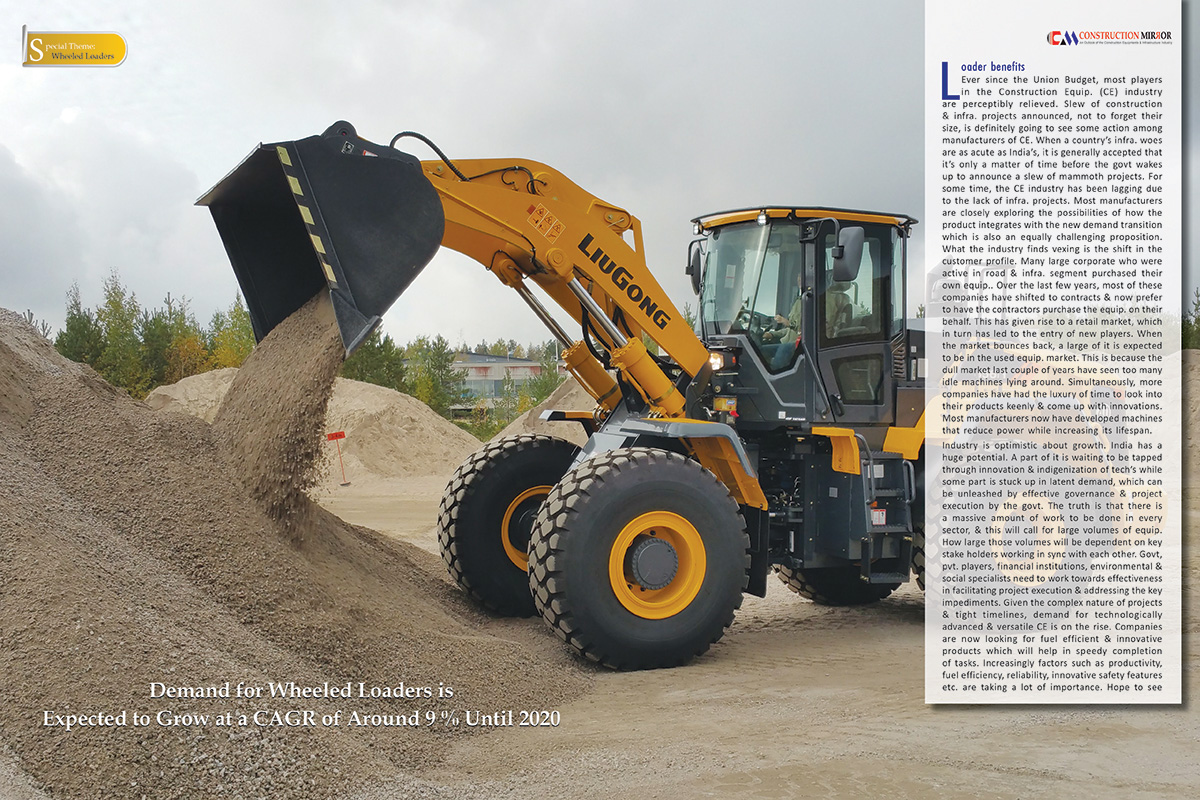
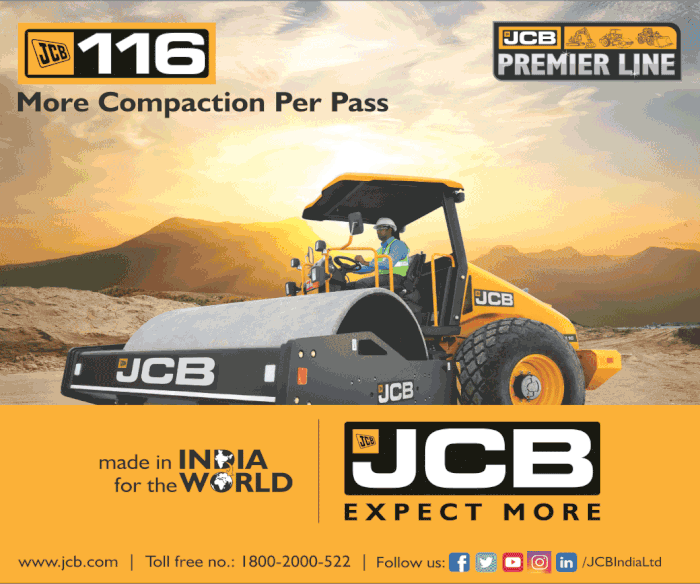
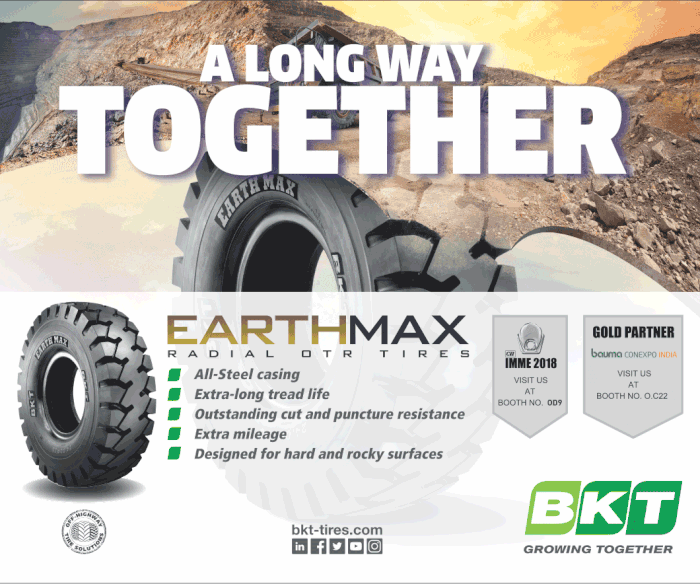
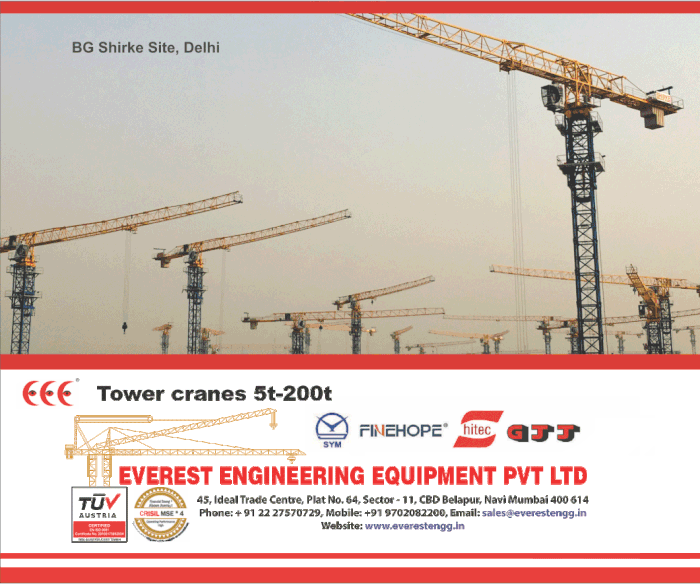
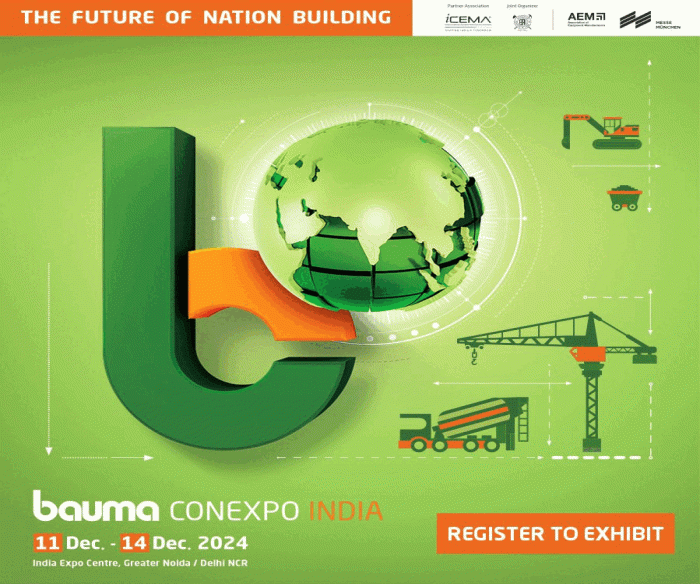
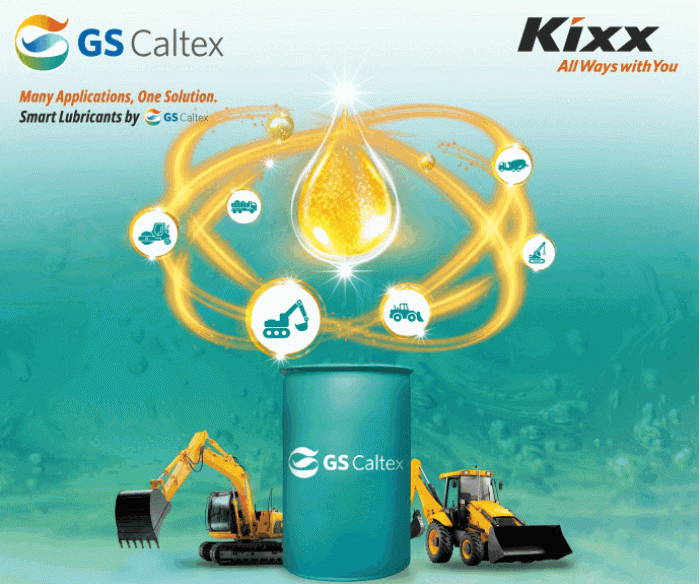
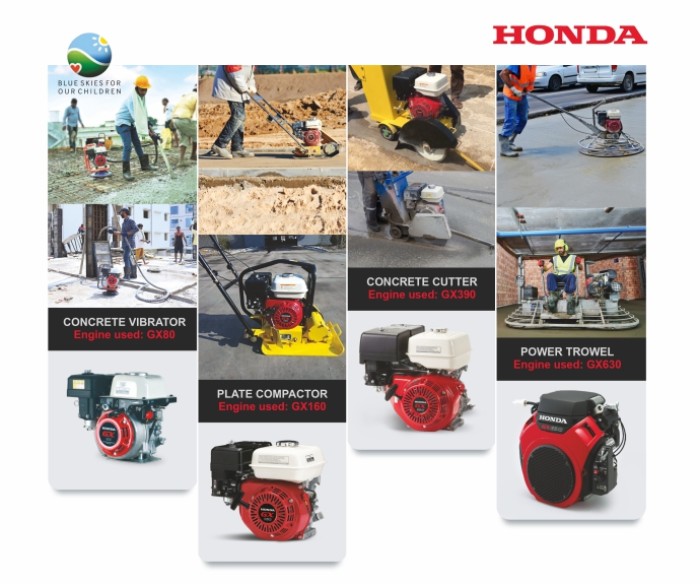
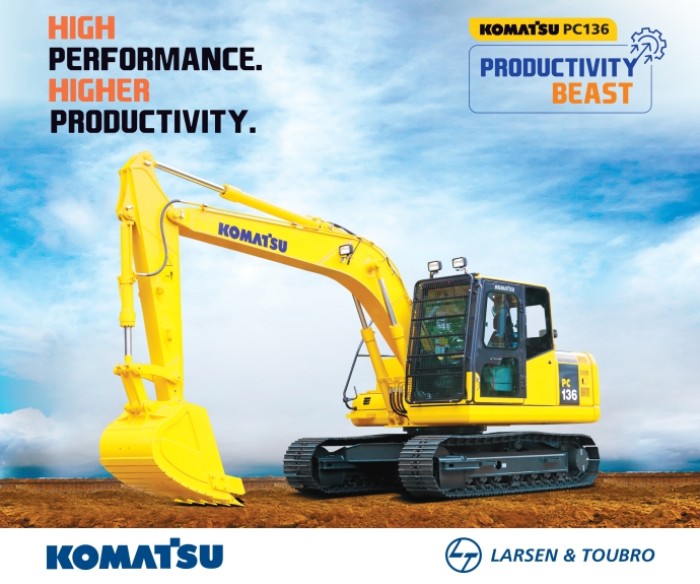
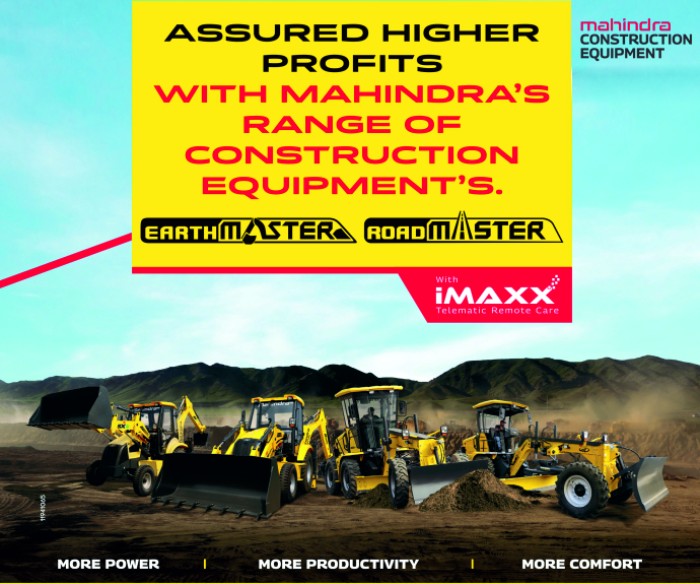
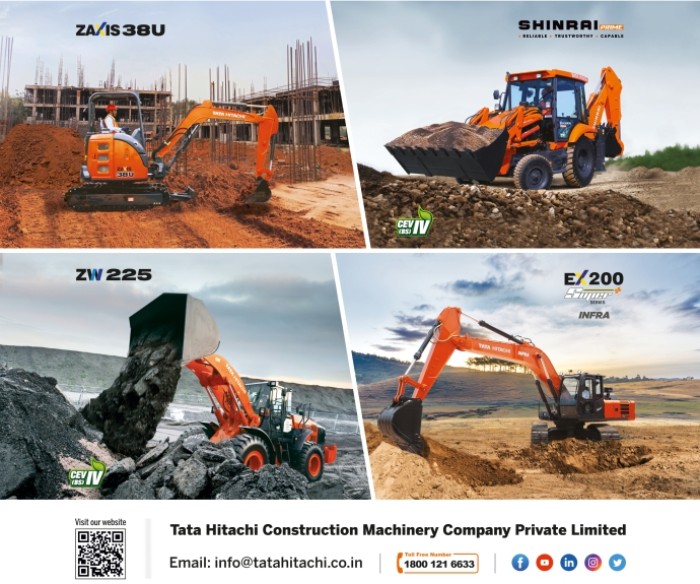
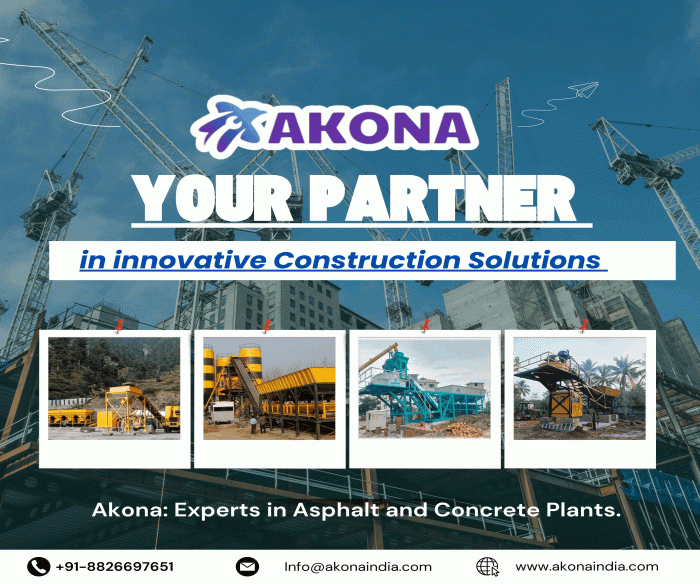


Leave a comment